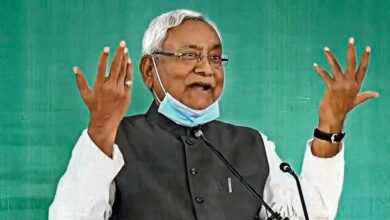By appointing Nitish Kumar’s nemeses as deputy chief ministers, the BJP makes its mark
NEW DELHI: Nitish Kumar took issue with the BJP’s selection of Tarkishore Prasad and Renu Devi as the NDA coalition’s two deputy chief ministers in November 2020. The BJP seems to have ignored Nitish’s well-known preference for Sushil Modi, who had served as his deputy three times, in favor of Prasad and Devi.

The BJP has chosen not to be intimidated by sensitivities, which have been a significant part in BJP-JD(U) tensions for decades, as seen by its choice of deputy chief ministers this time around: Samrat Choudhary and Vijay Kumar Sinha.
In their prior positions as head of the state unit and leader of the opposition, respectively, Choudhary and Sinha would constantly agitate Nitish, displaying an aggressiveness against Bihar’s longest-serving chief minister that their senior colleagues did not share.
Sinha, who served as speaker until 2022 when Nitish split to form a coalition with the RJD and Congress, had many arguments with the chief minister. Nitish’s followers subsequently used these incidents to promote their candidate’s decision to join the Mahagathbandhan.
Their selection demonstrates that the BJP will not play second fiddle to JD(U) as it did in the three previous coalitions with the party — 2005–2010, 2010–2013, and 2017–2020 — even though it will accept Nitish as chief minister once again despite having a significant numerical advantage. The BJP’s selection of the speaker, a position it seized in 2020 on the basis of a lopsided majority and which it is expected to hold, and, more importantly, whether it takes additional departments away from Nitish, will demonstrate whether the assertiveness extends to a rewriting of the trade agreements to the benefit of the saffron party.
When the BJP chose Sinha, a Bhumihar from the upper caste, to be speaker in 2020, they rejected the idea that Kumar would be better at ease with someone like Nandkishore Yadav, a minister under him.
Samrat Choudhary began wearing a turban after being named head of the Bihar BJP, and he swore not to take it off until he had removed Nitish. He took the oath with the saffron headgear securely in place, although it seems unlikely that he was concerned about the possibility of seeming foolish.
He is a Kushwaha (often called Koeri), and apart from the bizarre nomination of Satish Kumar as chief minister for five days during the turbulent late 1960s, the deputy chief minister post is the highest public office held by a member of the intermediate caste. The goal of Choudhary’s elevation is to gradually wean the Kushwahas from the Nitish “Luv-Kush” (Kurmi-Koeri) alliance in order to increase their support.
The second BJP minister to be sworn in, Prem Kumar, is a well-known figure and a member of the MBC Kahar caste, whose members have taken up the moniker Chandravanshis in recent years.
Among Nitish’s faithful lieutenants are JD(U) ministers Shravan Kumar (Kurmi) and Vijay Narayan Chaudhary (Bhumihar). Additionally, Bijendra Prasad Yadav served as a minister in each of Nitish’s administrations. Nevertheless, this appointment has more meaning. A major contributing cause to the dissolution of the previous NDA coalition was Yadav’s endorsement of former party head Rajiv Ranjan Singh Lallan’s calls for a split from the BJP. Furthermore proving that Nitish’s most recent change has the backing of his party is his return to a partnership with the BJP.







